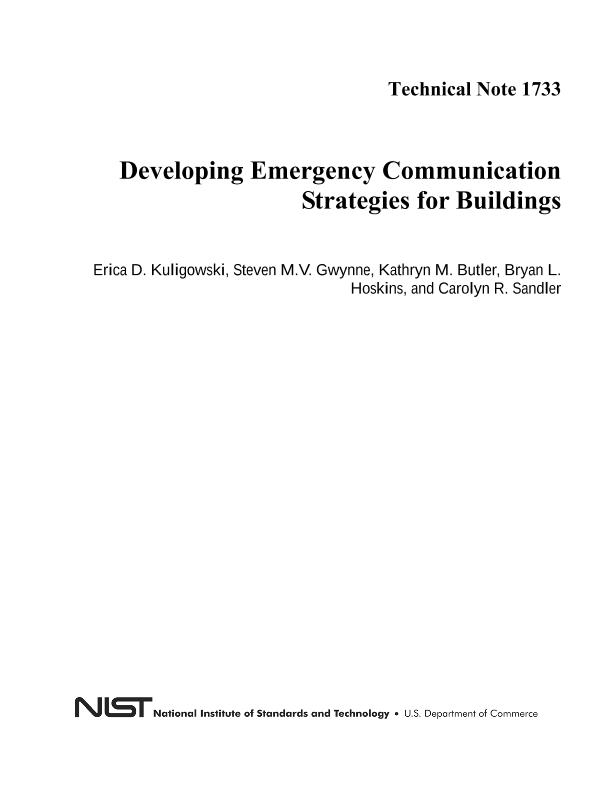Developing emergency communication strategies for buildings

Contenido multimedia no disponible por derechos de autor o por acceso restringido. Contacte con la institución para más información.
| Tag | 1 | 2 | Valor |
|---|---|---|---|
| LDR | 00000cam a22000004b 4500 | ||
| 001 | MAP20120024748 | ||
| 003 | MAP | ||
| 005 | 20120525093025.0 | ||
| 008 | 120525s2012 usa|||| ||| ||spa d | ||
| 040 | $aMAP$bspa$dMAP | ||
| 084 | $a813.3 | ||
| 245 | 0 | 0 | $aDeveloping emergency communication strategies for buildings$c E. D. Kuligowski... [et al.] |
| 260 | $a Boulder$bNational Institute Of Standards and Technology$c2012 | ||
| 520 | $aThe purpose of this document is to provide the foundation for the development of a guidance document on emergency communication message content and dissemination strategies. The document answers three major questions regarding emergency communication systems: 1) What technology exists or is proposed for use in emergency notification? 2) What approaches are currently being used to disseminate messages? 3) How does the public respond to different types of information and information sources? The document begins with a discussion of the technology that exists or is proposed for use in emergency notification, along with the positive and negative aspects of each system. The ways in which social media tools can be used to provide warnings in emergencies are included. Second, the document discusses the various types of emergencies for which warnings are needed, the range of protective actions that are taken by building occupants in emergencies, and the nature of the information required based upon the emergency type. The emergency communication systems installed in two different college campuses are described as examples of approaches used to disseminate warnings during emergencies. Finally, a comprehensive literature review is presented on how the public responds to various types of information and information sources both in emergency and non-emergency conditions. A summary list of the relevant findings from each literature source is assembled in Appendix A to identify the most effective ways to create or disseminate messages to achieve optimal occupant response. Detailed annotations for each source are presented in Appendix B | ||
| 650 | 1 | $0MAPA20080620424$aSeguridad contra incendios | |
| 650 | 1 | $0MAPA20080623302$aOrganización de la seguridad | |
| 650 | 1 | $0MAPA20080609788$aComunicación del riesgo | |
| 650 | 1 | $0MAPA20080558048$aEmergencias | |
| 650 | 1 | $0MAPA20080588434$aToma de decisiones | |
| 650 | 1 | $0MAPA20080580698$aGestión de crisis | |
| 700 | 1 | $0MAPA20120015654$aKulogowski, E.D. | |
| 710 | 2 | $0MAPA20080468088$aNational Institute of Standards and Technology |

